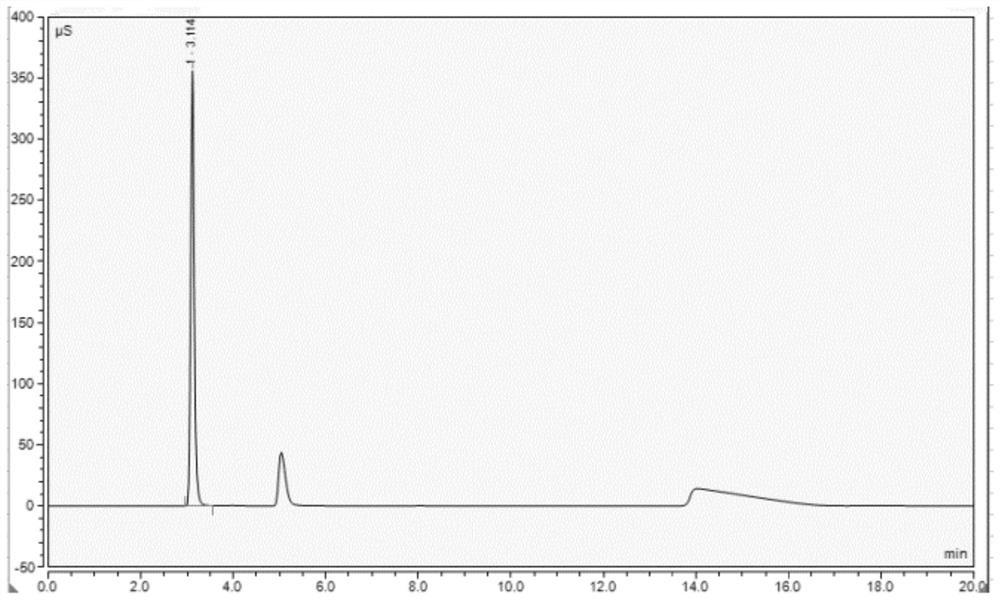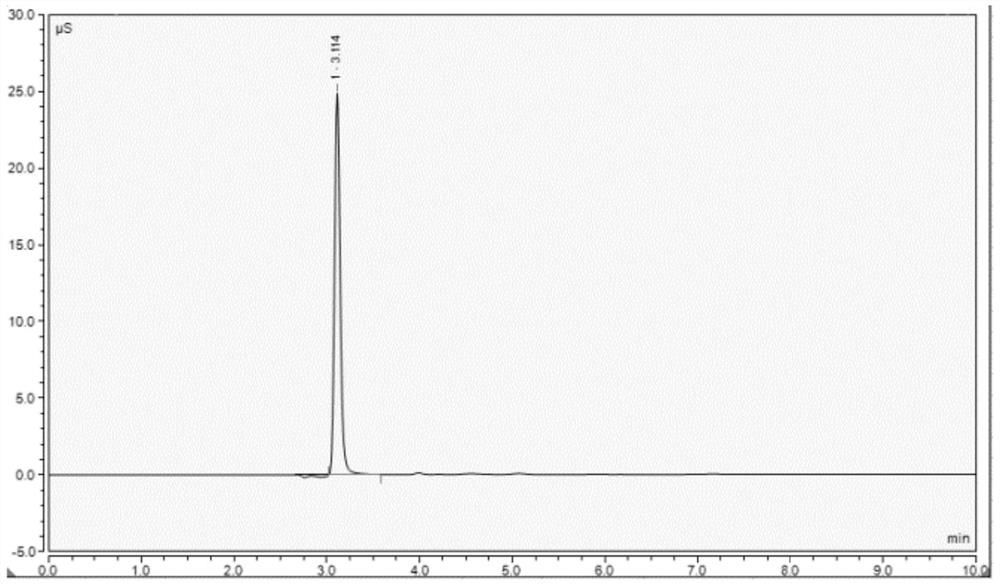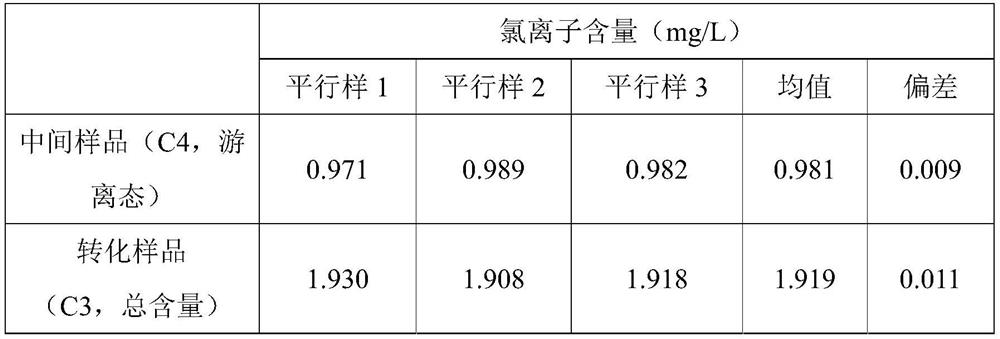Sample pretreatment method, halogen content detection method and application
A sample pretreatment and detection method technology, applied in the field of chemical analysis, can solve problems such as the accuracy of halogen test results to be improved and inaccurate testing, and achieve the effect of increasing accuracy and improving recovery rate
- Summary
- Abstract
- Description
- Claims
- Application Information
AI Technical Summary
Problems solved by technology
Method used
Image
Examples
Embodiment 1
[0081] 1. Sample weighing: Weigh 0.5000g of the initial sample to be tested into a 50ml volumetric flask, and then add 15ml of potassium iodide aqueous solution to the volumetric flask with a concentration of 30mmol / l. Thoroughly mix the sample with potassium iodide aqueous solution, let it stand for 10 minutes, and transfer it to a 50ml volumetric flask after filtering through a microporous membrane, and dilute to 50ml with an appropriate amount of deionized water to obtain an intermediate sample. Take 10g of the intermediate sample into a 50ml volumetric flask, add 10ml of calcium hydroxide aqueous solution (concentration is 20mmol / L), shake sufficiently to make the fluoride ions in the sample react with calcium ions to form insoluble calcium fluoride precipitates, and dissolve the insoluble calcium fluoride The precipitate was filtered and the hypophosphite was retained. Dilute to 50ml with an appropriate amount of deionized water to obtain a defluorinated sample.
[0082]...
experiment example 1
[0101] According to the detection methods provided in the embodiments and comparative examples of the present invention, waste water is used as an object to detect the content of chloride ions in each sample, and the recovery rate of free halogen and bound halogen in wastewater is calculated using chloride ions as an example. Silver chloride containing free chlorine 1.0mg / L and chlorinated paraffin standard solution containing 1.0mg / L combined chlorine were used for analysis. Record the data in Table 1 and Table 2.
[0102] Table 1 Chloride ion content test result
[0103]
[0104]
[0105] Table 2 Chloride ion recovery test result
[0106]
[0107] The results in Table 1 and Table 2 show that after the samples to be tested are treated with soluble iodide aqueous solution, the content of free chlorine and total chlorine is tested in two steps, and the content of free chlorine and combined chlorine can be obtained respectively. And the recovery rate of the present in...
experiment example 2
[0109] According to the steps provided in the Examples and Comparative Examples, the analysis was carried out using sodium fluoride standard solution containing 1.0 mg / L fluoride ion and sodium hypophosphite standard solution containing 1.0 mg / L hypophosphite.
[0110] Table 3 Fluoride ion content test results
[0111]
[0112] The results in Table 3 show that when the sample contains both fluoride and hypophosphite, the peak times of the two ions are consistent, see figure 1 and figure 2 . Because the software cannot distinguish, what is quantified is the sum of the contents of the two ions, and it is easy to classify the hypophosphite as the fluoride ion. When calcium hydroxide solution is introduced to separate calcium fluoride and calcium hypophosphite through filtration, the content of hypophosphite and fluoride ion can be distinguished, that is, the content of fluoride ion + hypophosphite in the intermediate sample is C1, and the defluoridated sample The measured ...
PUM
 Login to View More
Login to View More Abstract
Description
Claims
Application Information
 Login to View More
Login to View More - R&D
- Intellectual Property
- Life Sciences
- Materials
- Tech Scout
- Unparalleled Data Quality
- Higher Quality Content
- 60% Fewer Hallucinations
Browse by: Latest US Patents, China's latest patents, Technical Efficacy Thesaurus, Application Domain, Technology Topic, Popular Technical Reports.
© 2025 PatSnap. All rights reserved.Legal|Privacy policy|Modern Slavery Act Transparency Statement|Sitemap|About US| Contact US: help@patsnap.com



